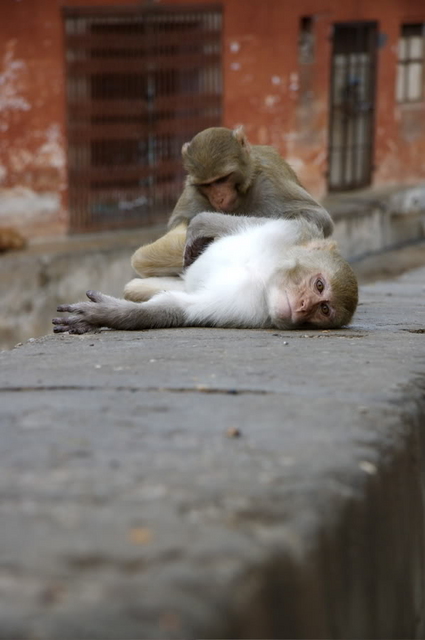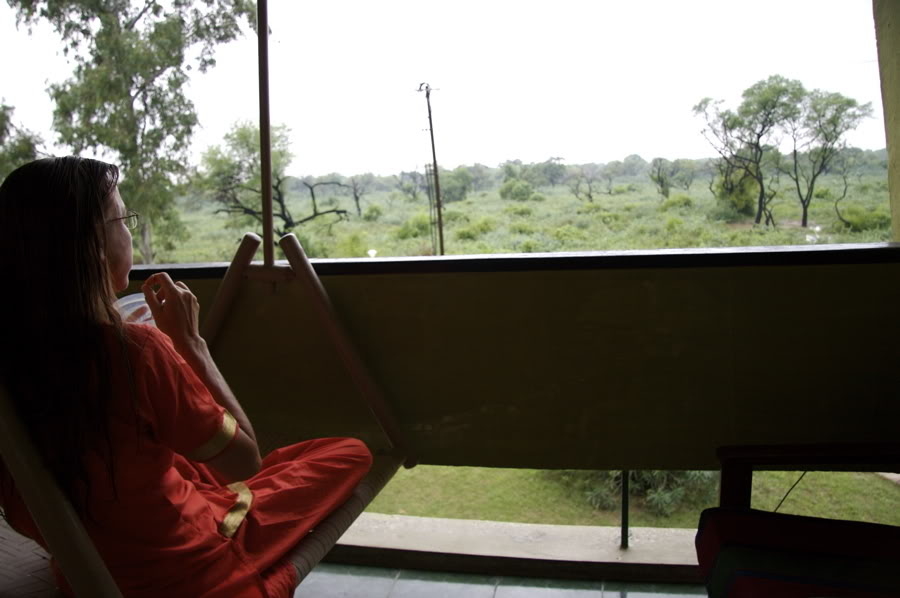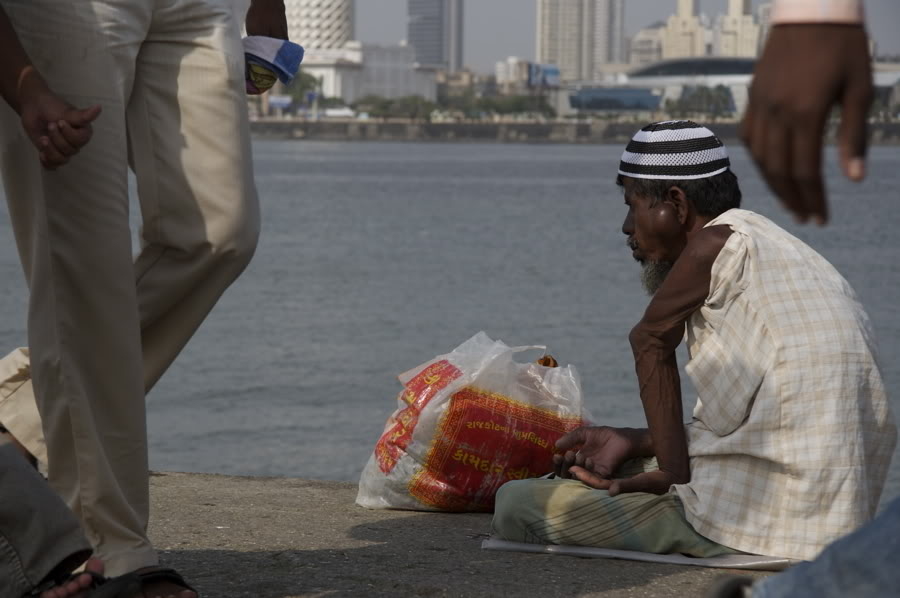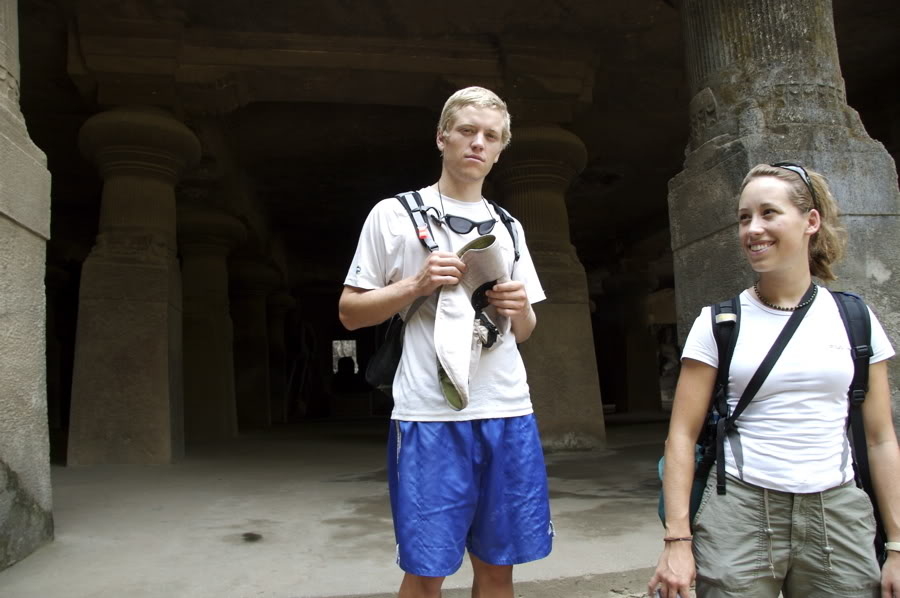Words and photos by David Lesh
The first India blog entry left off with leaving Delhi.
From there, we caught a sleeper train headed west, towards Jaipur.
Jaipur is a desert city known for its palaces, forts, and of course
it's camels and elephants.
Our first stop was the Hawa Mahal (Wind Palace) in the "Pink City". This section of the city was completely painted pink (at one time) to celebrate the visit of the (then) current Maharashtra.

We explored its various passageways.

After walking around Jantar Mantar, the world's largest sun dial, we headed to "The Monkey Temple".


it’s a bit of a trek into the hills above Jaipur, but well worth it.

Here is a small village we passed on the way up, lined with holy men bathing.

This is the Monkey Temple.

Then we grabbed a rikshaw to the Jal Mahal (Water Palace).


After feeding an elephant we were off.

But then we got pulled over and realized our rikshaw driver had no
license, papers, or ID of any kind. No problems here though, he
bribed the cop for real cheap.

Then we dipped off to the Amber Fort, one of the many impressive Mughal (Mogul) forts in the area.

We began our hike up to the fort to see all that it had in store for us.

We were left to ourselves to explore every nook and cranny of this expansive fort, including its royal chambers.

Around one corner, we found a snake charmer.

The next day we hiked up to the Nahargarh Fort, also in Jaipur.

A few patties of cow dung, drying in the sun. Makes great, cheap stove fuel.


Afterwards we headed to the local Jaipur Zoo. If you want to get really sad
and depressed by seeing indescribable acts of animal cruelty, I highly
recommend going to an Indian zoo. In this particular cage surrounded by
a circular 15ft wall, they had removed whatever animals were in there
(or maybe they died). Somehow a few cats had managed to find their way
in and couldn't get out. In this picture there is one dead bird,
one dead cat, and one almost dead cat. My hypothesis is that the first
cat died of starvation since it had been in there who knows how long,
and the second cat was able to catch and eat that bird, keeping it
alive just long enough for us to come by. We quickly ran and got some
zoo "officials" to get the remaining cat out. In India, you stumble across scenes like this too many times a day to count.

The
next day we took a hot, dirty, cramped local bus to the Bharatpur Bird
Santuary where thousands of birds naturally roam free without human
interference. We grabbed an overpriced room located in the preserve and
set up our mosquito nets. In the morning we awoke to a few peacocks in
front of our balcony.

We rented rickety bikes and biked around all day. There are more species of bird in this tree than one could shake a stick at.

I quickly befriended a Nilgay, a wild cross between a deer and a cow. Nilgay translates from Hindi as "Blue Cow".

Then we grabbed a tumtum to Fatehpur Sikri, an expansive ghost town fort on the way to Agra.
Akbar, the emperor of the Mogul empire, visited Sikri to see a famous
saint Shaikh Salim Christi in regards to his inability to produce a
son to take his thrown. The saint predicted the birth of an heir, which
came true a year later. As a tribute, Akbar moved his entire empire
here and built an impressive fort to house it. Unfortunately, It was
only inhabited for 15 years between 1571-1585 because the location was
poorly planned and the area was discovered to have major water
shortages. Since this amazing example of an Indo-Islamic fort was only
used for 15 years, it remains in pristine condition and you are
welcome to explore all of its spaces.
Allison emerges from the shadows.

Intricate hand carved holes in solid slabs of rock provide secure windows.



Looking out of the fort onto endless rice fields and straw huts.

Then we grabbed another sketchy 3 hour local bus to Agra.
It was night time and half of the narrow, undivided highway was closed. So our bus driver just began honking his horn and speeding full
speed ahead in the wrong lane, playing an endless game of chicken and forcing
all oncoming traffic off the road and into a ditch. Since there were no
seats available, I sat up front next to the driver and perched myself
on the engine and against the windshield as I watched the road speed by
underneath through a few gaping holes in the bus's floor.

On the way to the Taj Mahal, I made friends with a very large camel.

Allison proves that the Taj isn't really that big and impressive.

We were blessed with the good fortune of having the circus pass through town. India
as a whole is such a circus that we figured the Indian circus would be
the most ridiculous spectacle ever. Boy were we right. This is the real
deal "big top", single ring that is pulled up by the elephants.

Watching, we were sure that we would witness someone's death. It was the most ghetto, unrehearsed mess I have ever witnessed.

The
Taj Mahal, was built by emperor Shah Jahan as a memorial tomb for
his favorite wife who died giving birth to their 14th child in 1631.
Not long after its completion, Jahan's son overthrew him and imprisoned
him in his own fort, The Agra Fort. He lived out the rest of his days
from this very same balcony, overlooking his marvelous Taj Mahal and his life which was cruelly taken by his son. It is also in this
very same courtyard that his son put elephants, people, and tigers in
death matches for his own amusement.

What, you've never looked out your window and seen this? I would rather be the guy on top.

Then we took the worst 26 hour train ride of my life back to Mumbai (Bombay)
to meet my friends Zac and Joan. Plenty of puking was to be had. When
we arrived, we promenaded to the Haji Ali mosque, far out on an island
in the bay.

Although
treatment and support is free here, this leper decided to lose a few
limbs before seeking treatment in hopes of improving his begging career.

These are the Mahalaxmi Dhobi Ghats. If you have ever had clothes washed in Bombay
(which we have), they were most certainly washed here. Everyday, hundreds
of people (who also live in the "houses" along the edges) beat the dirt out
of thousands of clothes by hand in these hand made, 136 year old tubs.

Typical life in India, 2/3 of the country lives on under a dollar a day.

Zac and Joan get their first slice of India exploring ancient caves on Elephanta Island, off the coast of Mumbai.
On the way back, the engine of the boat we were on exploded and we were
stuck, dead in the water. After some time and tinkering (and drifting) we were
on our way.

One night, we went to Dharavi, Asia's largest slum to get them some traditional handmade clothes for cheap. An amazing 55% of Bombay's
population lives in slums like this, Dharavi is 1.7 sq km and is home
to over a million people. I think we met almost all of them, this
particular swarm was comprised mostly of children.

Guess that's about it for now. The next entry will document our trip to the Northeast including Varanasi and Nepal, should be a good one.
Thanks for reading!
-Lesh

Comments